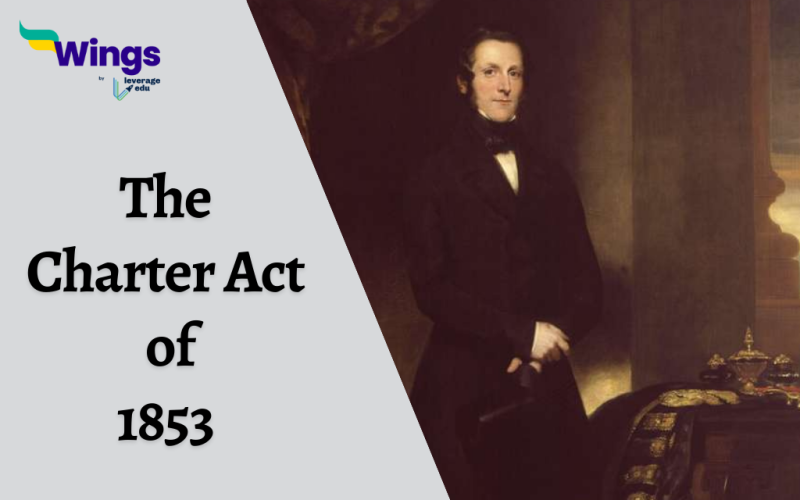The Charter Act 1853 was passed in the British Parliament when Lord Dalhousie was the Governor-General of India. The primary aim of this act was to renew the East India Company’s charter. However, unlike its predecessors such as the Charter Acts of 1793, 1813, and 1833, the Charter Act of 1853 did not mention the time period for which the charter was being renewed. In this blog, we will discuss this act in detail along with its key provisions and interesting features. Let’s get started right away.
Table of Contents
About the Act of 1853
The Charter Act of 1853 was the last of many charters released under the Company’s rule in India. The enactment of this act assured the British rulers that they could now retain territories of India in trust for their crown. Moreover, it introduced numerous major provisions such as provincial representation under the Legislative Council.
Also Read: The Charter Act of 1833: Provisions, Features
Features of the Charter Act of 1853
Here are a few prominent features of the Act:
- The Charter separated the functions of the Legislative branch from the Executive branch of the government.
- A system of local government was introduced and represented in the legislative council.
- It also introduced a Parliamentary form of government in India.
- By eliminating the time period of renewal, the act also extended the role of the East India Company to infinity.
- The Act of 1853 ended the policy of providing government jobs only on the recommendations. Instead, the posts of Civil Services in India were now open for Indians.
Also Read: What was the Mountbatten Plan?
What were the Provisions of the Charter Act of 1853?
Below we have mentioned the key provisions of the Charter Act (1853) to help you understand the topic better.
| Category | Provision |
Board of Directors | The council had 24 Board of Directors. |
| The act reduced this number from 24 to 18 and then ultimately to 6. | |
| It also mandated that these six members should be nominated by the crown. | |
New Presidency | The act empowered the Court of Directors to establish new presidencies. |
| It authorized the Court of Directors to appoint a Lieutenant Governor for Punjab. | |
| Civil Services | The Charter opened the doors to Civil Services for all Indians. |
Governor-General Council | The law member who was also the fourth member became eligible to vote. |
| Members in the Legislative Council were increased from 6 to 12. | |
| These 12 members included – a. Governor-General, b.Commander-in-chief, c. 4 Governor-General Council members, d. Chief Justice of the Supreme Court, e. A judge of the Supreme Court, and f. 4 representative members from the company’s servants with at least 10 years of tenure. | |
| The act empowered the Governor-General to nominate a vice president to the council. |
FAQs
Although the Charter Act of 1853 introduced numerous key provisions, it also came up with certain limitations. For instance, despite paving the way for Indians to the Legislative Council, their presence was minimal. Moreover, the act did not address the economic and cultural exploitation of Indians by the British forces.
The Charter Act (1853) had numerous key objectives. It included the renewal of the company’s rule in India for eternity, separation of the legislative from the executive, reduction in the Board of Directors, the opening of Civil Services for Indians, and so on.
The Charter Act of 1813 was passed by the British Parliament. It renewed the East India Company’s charter for another 20 years. Later on, it came to be known as the East India Company Act, of 1813.
Relevant Blogs
| What was the Lucknow Pact? | Vernacular Press Act of 1878 |
| Widow Remarriage Act | Government of India Act 1935 |
| Charter Act 1813 | Government of India Act 1919 |
That’s all about the Charter Act of 1853! If you want to know more about topics like this, then visit our general knowledge page! Alternatively, you can also read our blog on general knowledge for competitive exams!
 One app for all your study abroad needs
One app for all your study abroad needs













